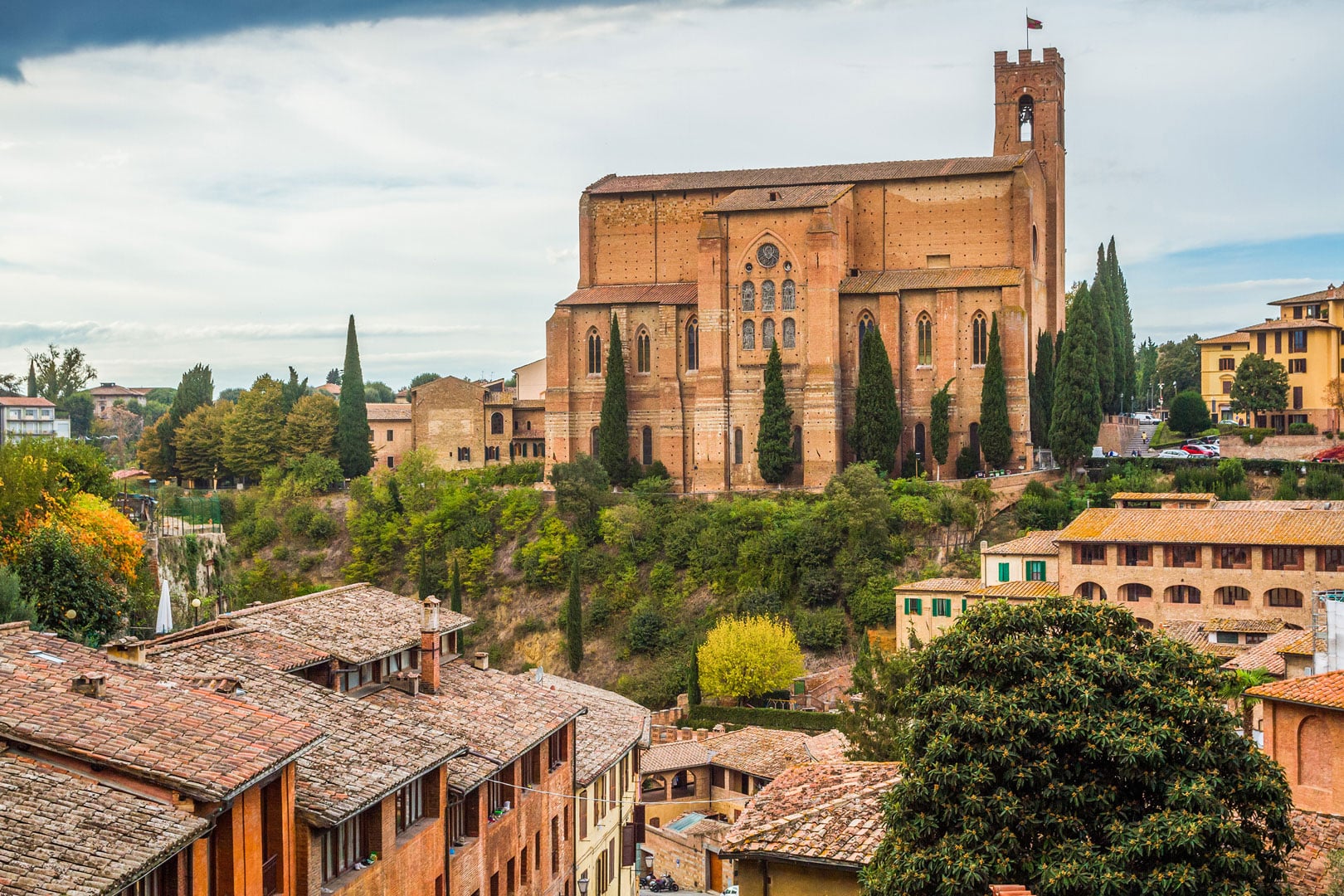Santa Caterina’s places

If you want to get to know the figure of St. Catherine, a visit to the San Domenico is definetely crucial: dated around the 11th century, it has an inside made up of one big aisle, transformed over centuries due to fires and earthquakes. In the counterfacade you can find the Cappella delle Volte, where Saint Catherine used to retire in prayer and where a fresco, considered her only real portrait painted by Andrea Vanni when the Saint was still alive, is stored.
On the right-hand side, in a Renaissance chapel, painted back in the 14th century by Sodoma and Francesco Vanni, is stored an ancient relic of the Saint’s head.
Leaving the building, through a panoramic path of excellence overlooking the oldest part of the city, you reach the Sanctuary of Santa Caterina, which incorporates her birthplace, modified over time and enriched with works of art.
From here, you can then head to the hill upon which the Cathedral was built, in front of the ancient Santa Maria della Scala Hospital, built before the year 1000 in order to host pilgrims, travelers and abandoned chidren. St. Catherine was a frequent presence in the hospital, in which she assisted sick patients. Fontebranda, which was crucial for the water supply and has been until recent times, in an area where leatherworkers and dyers worked, like St. Catherine’s father. Currently, the spring has just a decorative function and represents an attraction for children who can admire the variety of fishes that live in this stretch of water.
From here, you can then head to the hill upon which the Cathedral was built, in front of the ancient Santa Maria della Scala Hospital, built before the year 1000 in order to host pilgrims, travelers and abandoned chidren. St. Catherine was a frequent presence in the hospital, in which she assisted sick patients.



